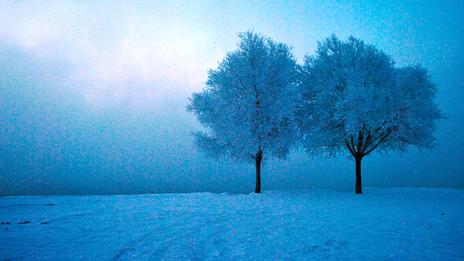This post may contain affiliate links. We may earn money or products from the highlighted keywords or companies or banners mentioned in this post.
I was on a mission – one that required me to wear four layers of warm clothes and a fleece balaclava. I was going to be braving temperatures below -20C for hours. My friend Cherry Li, who grew up nearby and knew what to expect, had come with heated pads to slip into our boots and gloves. She insisted I bring extra batteries for my camera – they wouldn’t last long in these conditions.
Most travellers who brave winter in China’s far northeast visit the well-publicised snow and ice sculpture festival in Harbin. But our destination was Jilin, a town 200km to the southwest, where a different kind of icy spectacle comes courtesy of Mother Nature.

- Trees in the icy fog. (Gabrielle Jaffe)
From late November to early March, dazzlingly white ice crystals form on the trees along the city’s Songhua River. Giving trees the appearance that they’ve been carefully dusted with sugar, these crystals form only when fog freezes.
When fog forms below 0C, its super-cooled water droplets remain liquid, even though the temperature is below freezing. But as soon as the droplets brush something solid such as a tree branch, they freeze instantly. Tiny ice granules build up, growing into feathery white forms known as rime.
For rime to occur, it needs a combination of cold climate, sufficient airborne moisture and clear skies overhead. Typically this happens in the interior of large continents, in a protected river valley or on mountain slopes shrouded in mist. Located at a latitude of 44 degrees north and some 350km inland, Jilin’s geography is ideal for the formation of rime. Despite air temperatures sometimes dipping as low as -32C, a hydropower dam on the city’s river keeps the water flowing, which in turn encourages the creation of milky white freezing fog.
Jilin celebrates the phenomenon each year from mid-December to February with the Jilin International Rime Ice and Snow Festival. It includes ice-skating and skiing competitions, photography exhibitions and even rime-inspired poetry competitions. Rime is most likely to appear in January, but sightings are not guaranteed. Even in January, rime only materializes for an average of 9.4 days.
On the day we arrived, several inches of old snow glistened on the ground. The trees, however, were bare, creating dark, bleak silhouettes against an anaemic winter sky. We were told that rime hadn’t materialized for days.

- Fog rises from Jilin's Songhua River. (Gabrielle Jaffe)
Disappointed, we headed to the Songhua River, where we watched small puffs of mist rise from the water. The wide river had frozen at its edges but still flowed in the middle. Six identical apartment blocks, each one dozens of stories high, towered over the riverbank on the far side, housing just a fraction of Jilin’s more than four million residents.
The next morning, we awoke at 5:30 and found no sign of rime outside our hotel. Luckily, our taxi driver had better news. “I heard on the radio that you can see rime today on a stretch of river 20km from here,” he said. “Let’s go. It’s the most beautiful scenery in China.”

- Fog over the Songhua River. (Gabrielle Jaffe)
Li and I were not the only rime chasers. Just as cherry blossom reports are common in Japan, Jilin’s local news stations give daily rime reports during the peak season so enthusiasts can find the best places to spot rime that day. Poetically described in Chinese media as “snow willow”, “ice flower” and “spring in winter”, Jilin’s rime (or wusong, as it’s called in Mandarin) draws legions of Chinese tourists.
Despite the driver’s assurances, the barren trees near our hotel left us sceptical as we set off. Some 20 minutes later, however, a dense fog enveloped our car and our taxi slowed. By the time we parked by the river, the fog had thinned slightly and the sky had turned from black to midnight blue.

- A photographer prepares to capture the rime. (Gabrielle Jaffe)
A lone photographer had beaten us there. Using his car headlamps to illuminate the trees, he was shuffling his tripod around. In the light, we finally saw it: the elusive rime.














